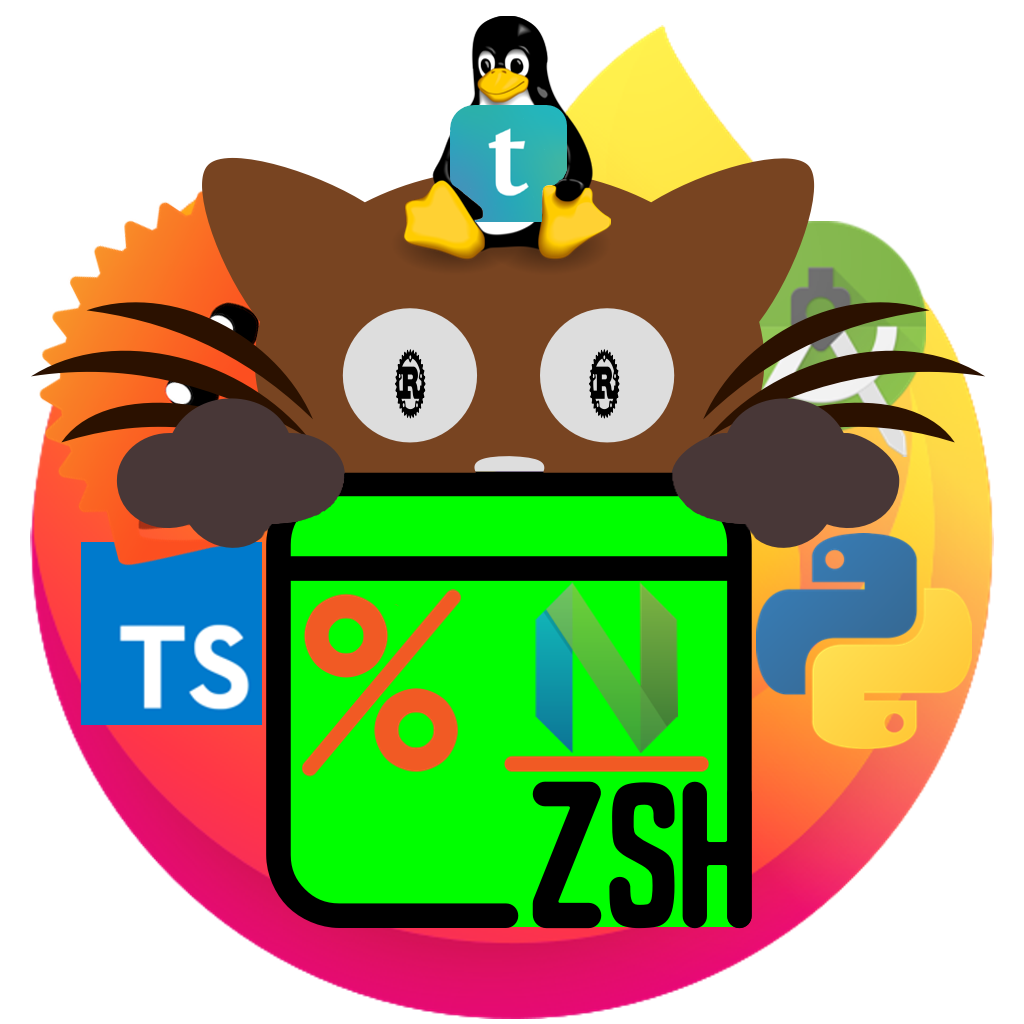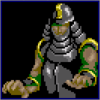It’s like, when you install arch, you just feel like not bothering with installing the gui stuff, because you’re so above pointing and clicking on things. If only they’d make a command line version of Metro Exodus. Metro Exodus on the command line would be so much more powerful. It’s so lame with graphics. Don’t get me started on editing my photos of the kids and fam. Just load that pic up on the command line as raw data. I’ll just eliminate the red eye reading the machine code and editing it. GUIs are for weaklings. Just install arch without X or gnome or any of that stuff. Don’t even get me started on the KDE wussies. Oh yeah, you want things to look all pretty on your screen to click on. Computers aren’t pretty. They take commands. All you need are fingers and a keyboard. You can play tetris on the terminal, you know. No need for graphics. The linux devs just added graphics and a GUI for wussy users. Even invented that penguin thing to make it pretty and dumbed down.
… btw
Libcaca renderer for Metro Exodus would be… intriguing.
Arch with gnome? cursed, I say
I’ve started to feel dirty clicking on icons like some sort of peasant.
I don’t mind a batch/script. But give me text over fancy GUIs any day
Seems like a lot of Linux/programming memes basically just stem from a place of real noob insecurity. “I can’t figure out how to quit vim!” “CLI is scary!” “Arch users say ‘I use arch BTW’!” No offense to the noobs, it’s just that, you know, people use this stuff for an actual reason. Yeah, vim requires you to be in normal mode and hit :q or even (gasp) :q! to quit sometimes, it’s also a hyperflexible editor that lets you program super powerful functions, macros, do dirt-easy regex replacements, etc. Including binding Ctrl-Q to quit if you really struggle with that.
deleted by creator
The nicest aspect, for me, is that I rarely need to do something just once. So while I sometimes prefer a GUI workflow for a simple one-off, if it’s something I may end up repeating, then I’d rather have a command-line approach which can be chucked in a shell script, run by cron, or easily invoked over ssh on my phone.
But for highly interactive things (e.g., reading email), I’ll stick to GUI solutions like a pleb.
Linux is so awesome because of scripting and automation. It’s just there, an expected thing it wants the user to do. My favorite thing about automation and scripting is how you can write a script in the terminal and make it part of the GUI experience. Everyone has their own preference about how to edit a file. I’ve been writing scripts since the 1990s, so I’m just used to doing that in the terminal. The OS has evolved since then so much. So, I write up my script in the terminal, then I turn it into something I can click on and run when I need to, on top of scheduling its execution. I think that’s really special and unique about Linux now. Mac OS was like that in the past. It got less so over the years and Apple made it harder for the user to do this. Linux has maintained this type of thing that has always been since UNIX and I really think it is a driving force for the future of computing. It now stands as the only OS that allows the user to customize his or her experience through scripting as a totally functional and integrated aspect of the OS. You don’t have to do anything special to get scripting to work. It comes to you this way. You just write your script. You decide how you want to execute your script, which can even include executing it in the GUI if you want. Microsoft Windows never had this and is desperately trying to catch up, but in order to do it on that OS, it’s very clunky. Linux right now is the only OS available that allows you to do exactly what you’ve described. You only have to do it once if you have the know-how. And it’s just there. No special things to install or create.
As a person who uses terminal almost all the time, this is sort of true. The real power comes with automations.
I dunno. There is something empowering whenever windows-super users find out you (almost) never have to reboot to update.
(Just for the kernel, then all it is, is a reboot. I like windows where it requires installation while booting- actually.) (Okay, so I just run the command line on startup automatically. You’re right.)
I prefer the magic of “installing the new OS” without formatting or formatting your OS while “keeping your user config files”
/bin/bash
/bin/zsh
A dirty linux admin here. Imagine you get ssh’d in nginx log folder and all you want to know are all the ips that have been beating againts certain URL in around last let’s say last seven days and getting
429most frequent first. In kittie script its likefind -mtime -7 -name "*access*" -exec zgrep $some_damed_url {} \; | grep 429 | awk '{print $3}' | sort | uniq -c | sort -r | lessdepends on how y’r logs look (and I assume you’ve been managing them - that’s where thezgrepcomes from) should be run intmuxand could (should?) be written better 'n all - but my point is - do that for me in gui(I’m waiting ⏲)
As a general rule, I will have most of my app and system logs sent to a central log aggregation server. Splunk, log entries, even cloudwatch can do this now.
But you are right, if there is an archaic server that you need to analyse logs from, nothing beats a find/grep/sed
In splunk this is a pretty straightforward query and can be piped to stats count and sorted. I don’t know if you’d exactly count that as gui though.
I know it’s faster and even easier for many things, but it’s with great shame that I would rather mess with network interfaces via GUI than on command line.
nmtuiis a poor substitute.Nmtui is a godly creation, there is no better way no setup NeworkManager
The next level above that is installing a keyboard-driven window manager like i3. That’s where the dopamine really comes from.
Finally ditching Apple’s “Music” player for MOC after watching Apple dismantle/bury basic features over the last decade.
Also, the scale is logarithmic.
deleted by creator
My absolute favorite is nnn (mine’s aliased from “n3”, is that insane) -> “r” which gives you a vim console for renaming all the contents of a directory. Beats perl-rename and everything else cause it’s actually interactive. Although it is possible to write files over each other with it, so gotta be careful.
In the default view you literally just use the arrow keys to navigate, basically the same as the old Windows tree explorer or whatever else like that. 1/2/3/4 flip between tabs. If you hit “right” on a file I think it hits xdg-open or something to open it in the default program. “e” opens text in your … default
EDITOR? Guessing. “?” for help and a lot of other commands.deleted by creator
I don’t really use it that much honestly. Let me see…Ctrl-R is rename for a single file. Copy/move I think are selection operations, one way is to press space next to file names, navigate where you want and do Ctrl-P to copy or Ctrl-V to move (cut). Symlink, uh, just put the cursor on the file, “n”, “s”, type the name out and press enter.
You can also use the batch rename editor to move files it looks like. I hadn’t tried that before, but it does let you put in an arbitrary path.
deleted by creator
Also, ddd
I wish I was better at using the terminal. I’m running EndeavourOS as my daily driver, so I use it a lot but I wish I was even more comfortable with it. Are there any good crash courses available for noobs?
Linuxcommand.org is a great start. Writing shell scripts and using cli programs for things you actually need and will use will greatly accelerate learning. I stopped using a file manager entirely to force myself to learn how to get around, then switched to neovim from vscodium, taskwarrior instead of Obsidian Tasks, termdown for timers, etc. A tiling wm makes the transition easier imo because you can have many terminals open for visual multitasking. Like with anything, you’ll get better faster if you just do it a bunch and don’t be afraid to mess up and get your hands dirty.
============================================== Using emacs for everything
Or vim. Both are fine choices.








